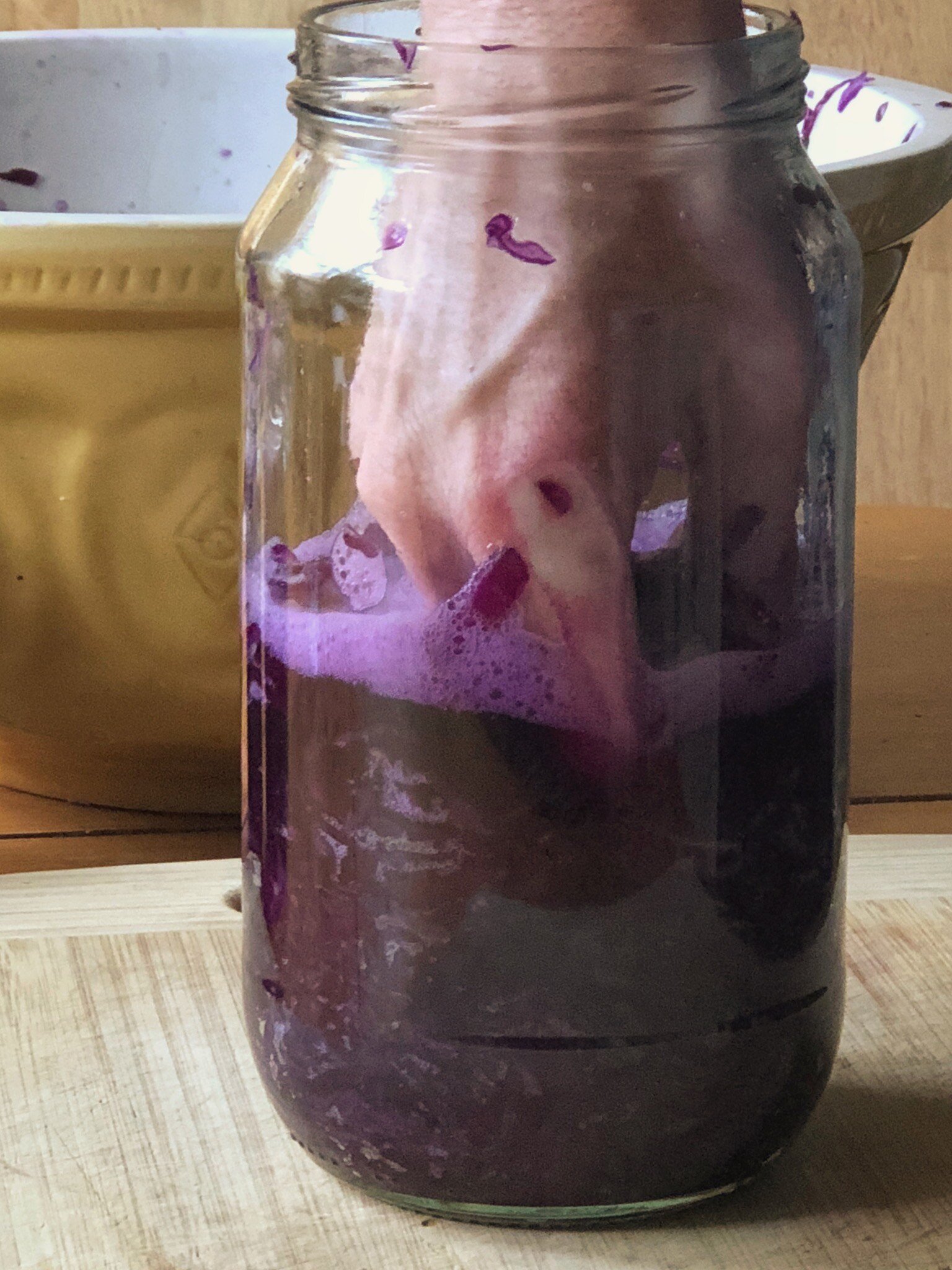It took my husband and I a long time to become sauerkraut converts. We just didn’t understand why anyone would enjoy eating something so stinky and sour. Then a friend of ours served it up with a Hungarian beef stew and we suddenly understood; it’s all about context. The sharp pungency of sauerkraut is a fantastic foil for a big, warm, hearty stew and has the added benefit of also helping in the digestion of rich and fatty food. Sauerkraut pairs beautifully with:
· potatoes,
· onions
· celeriac
· cabbage
· sausages
· beef
· pork
· bacon
· apples
· walnuts
· cheddar cheese
· sour cream
· eggs
· mustard
· caraway
· juniper
· dill, parsley, marjoram and many other European herbs.
Purple Sauerkraut is our favourite sauerkraut, but there is no limit to the variations. Visit fermentation guru Sandor Katz’s website to find out more about designing your own ‘kraut.
Don’t worry, it’s easy!
Making sauerkraut is actually quite easy. Ferments like this rarely grow bad bacteria if you take a few simple precautions
Choose a fresh, unblemished cabbage with tightly packed leaves
Make sure your utensils and hands are clean
Sterilize your jars with boiling water and drip dry completely
Make sure the vegetables are always submerged in their juice
Purple Sauerkraut with Fennel Seed
For each kilo of cabbage you’ll need a 1 litre jar. Make as much as you want; kept in the fridge it lasts for months.
Ingredients
1 kg purple cabbage
1 level tbsp Himalayan crystal salt
1 tbsp fennel seed
Method
Sterilize the jar and its lid with boiling water and leave to drip dry.
Toast the fennel seed in a dry pan until a sweet, toasty aroma rises. Set aside to cool.
Remove the tough outer leaves of the cabbage. Reserve a large, unblemished leaf for later, giving it a good wash first.
Slice the rest of the cabbage as thinly as you can an place in a large bowl along with the remaining ingredients.
Now for the dirty work! Using you (clean!) hands begin to squeeze and press the cabbage. The aim is to bruise the leaves and encourage them to give up their juice. When the cabbage is juicy enough, you will be able to pick up a handful of cabbage and wring juice out of it, like squeezing water out of a wet sponge. This can take quite a bit of effort! To save myself the muscle work I often place a weighted plate on top of the cabbage for a few hours, until the juice begins to run.
When it’s sufficiently juicy, pack the cabbage into the jar, packing down tightly as you go. Leave about 1 inch of space below the rim. Ensure there is enough liquid to cover the cabbage.
From the reserved cabbage leaves, cut a circle that fits snugly over the cabbage and press down to submerge. It’s essential to keep the cabbage under the liquid throughout the fermenting process. Traditionally fermenting weights are used for this purpose, but I find that small Chinese-style tea cups work just as well. When you screw on the lid, it will push down on the teacup, holding the cabbage under the brine.
Place the jar on a tray in a in a cool place to ferment (it’s likely to leak). I put mine in the laundry with the window open – it does give off some pretty sulphurous smells in the first week!
For the first week you will need to ‘burp’ the ‘kraut daily. This entails unscrewing the lid to release any trapped gas. Also, check that the cabbage remains submerged and push it back under using the teacup if need be.
After about 7-14 days the most vigorous phase of the fermentation will taper off. At this point you can wipe down the jars and pop them in the fridge to mature. You can eat the ‘kraut at any point, but it tastes best after a couple of months slow fermentation in the fridge.
Try it with:
A baked potato instead of coleslaw
Pörkölt (Hungarian beef stew)
Bangers and mash
Potato and dill omelette
In a Reuben sandwich




